Although this mushroom is known as the Elm oyster, it actually isn’t an oyster mushroom. The Elm oyster mushroom (Hypsizygus ulmarius) is part of a small genus of mushrooms that look somewhat similar to oyster mushrooms. Elm oysters are an excellent edible species and pretty easy to distinguish in the field, making them a perfect beginner mushroom.
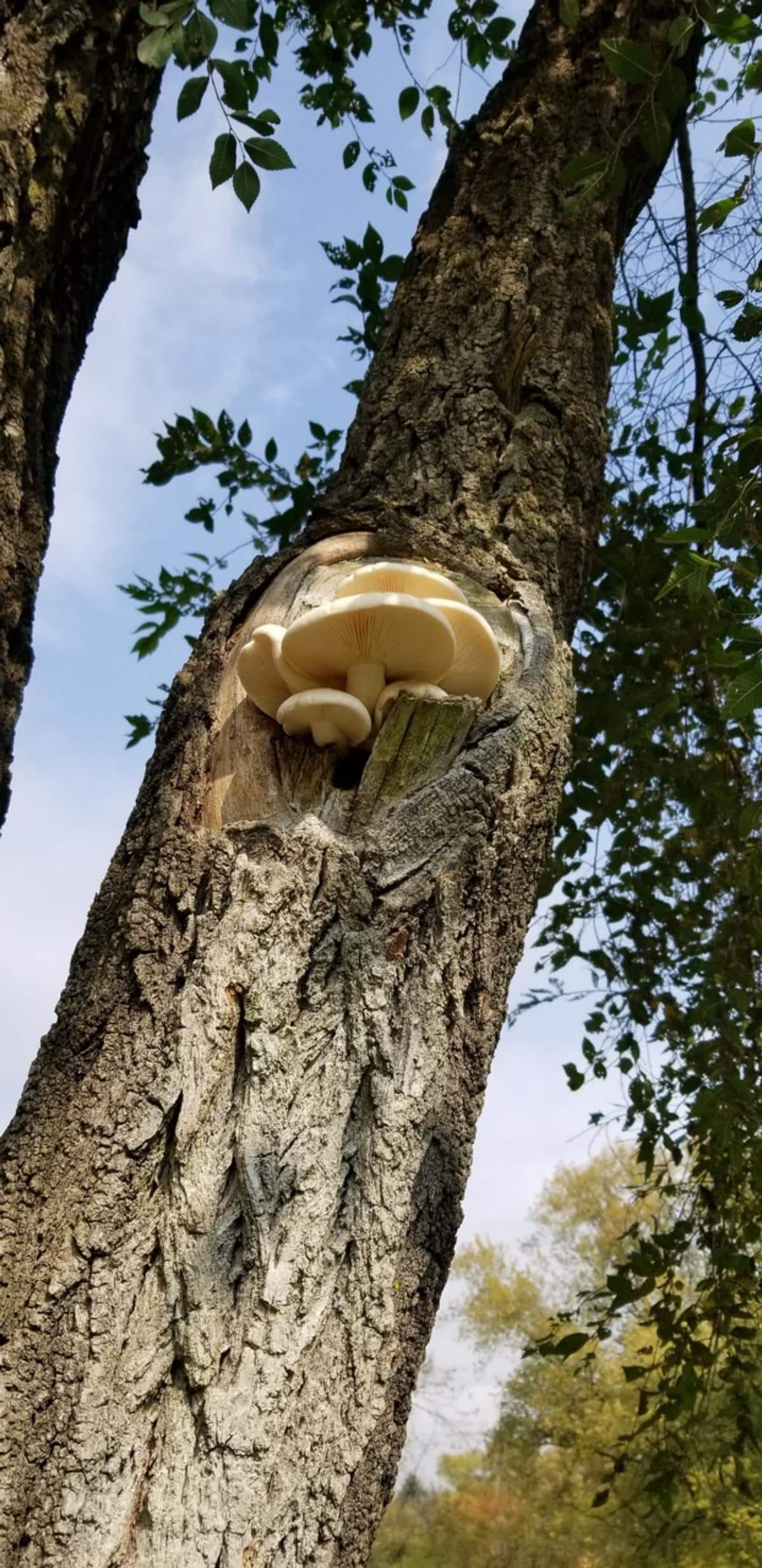
Jump to:
All About Elm Oyster Mushrooms
The Elm oyster grows primarily on elm trees, as you can probably figure out. The scientific name Hypsizygus translates to “high up yoke,” and ulmarius relates to the genus name for elms, Ulmus. It’s nice when the scientific names translate into identification traits!
Elm oyster mushrooms were first described to science in 1791 by the French botanist Jean Baptiste Francois Pierre Bulliard. He put it in the Agaricus genus, which is where most gilled mushrooms started out. Later on, it was moved to the oyster mushroom genus, Pleurotus, since it does look similar.
Then, in 1984, Canadian mycologist Scott Redhead moved it to Hypsizygus. There are two other species in this genus, including H. tessulatus, the beech mushroom.
Elm oysters are not as common as species of “real” oyster mushrooms, but they are widespread across the world.
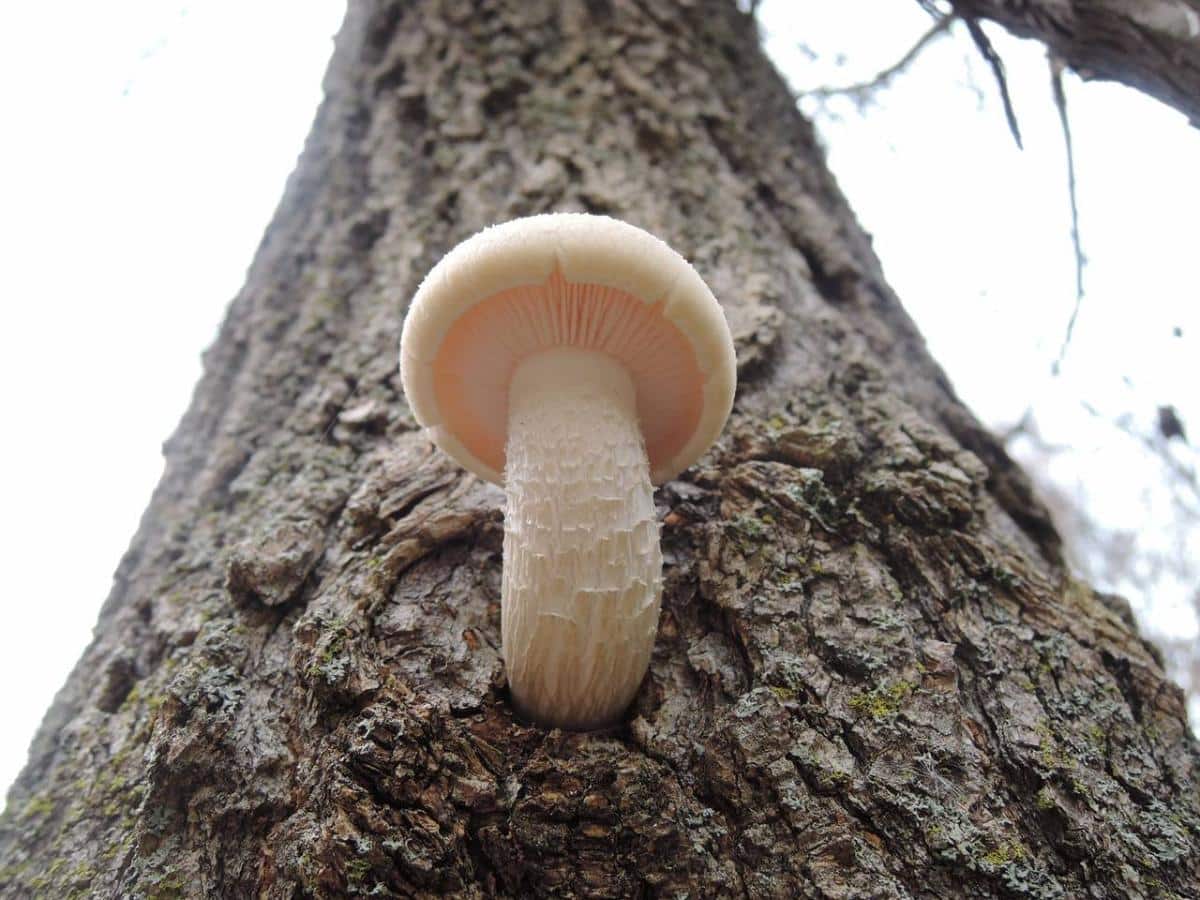
Hypsizygus ulmarius by Eva Skific on Mushroom Observer
The Elm oyster is a cultivated mushroom, though its cultivated version seems quite different from the wild one. Cultivated species with the Hypsizygus ulmarius name look very much like actual Pleurotus oyster mushrooms. Possibly this is something the growers have sought to develop? This confusion may be due to this mushroom being classified and cultivated as Pleurotus ulmarius until 1984, when it was moved to its new genus home.
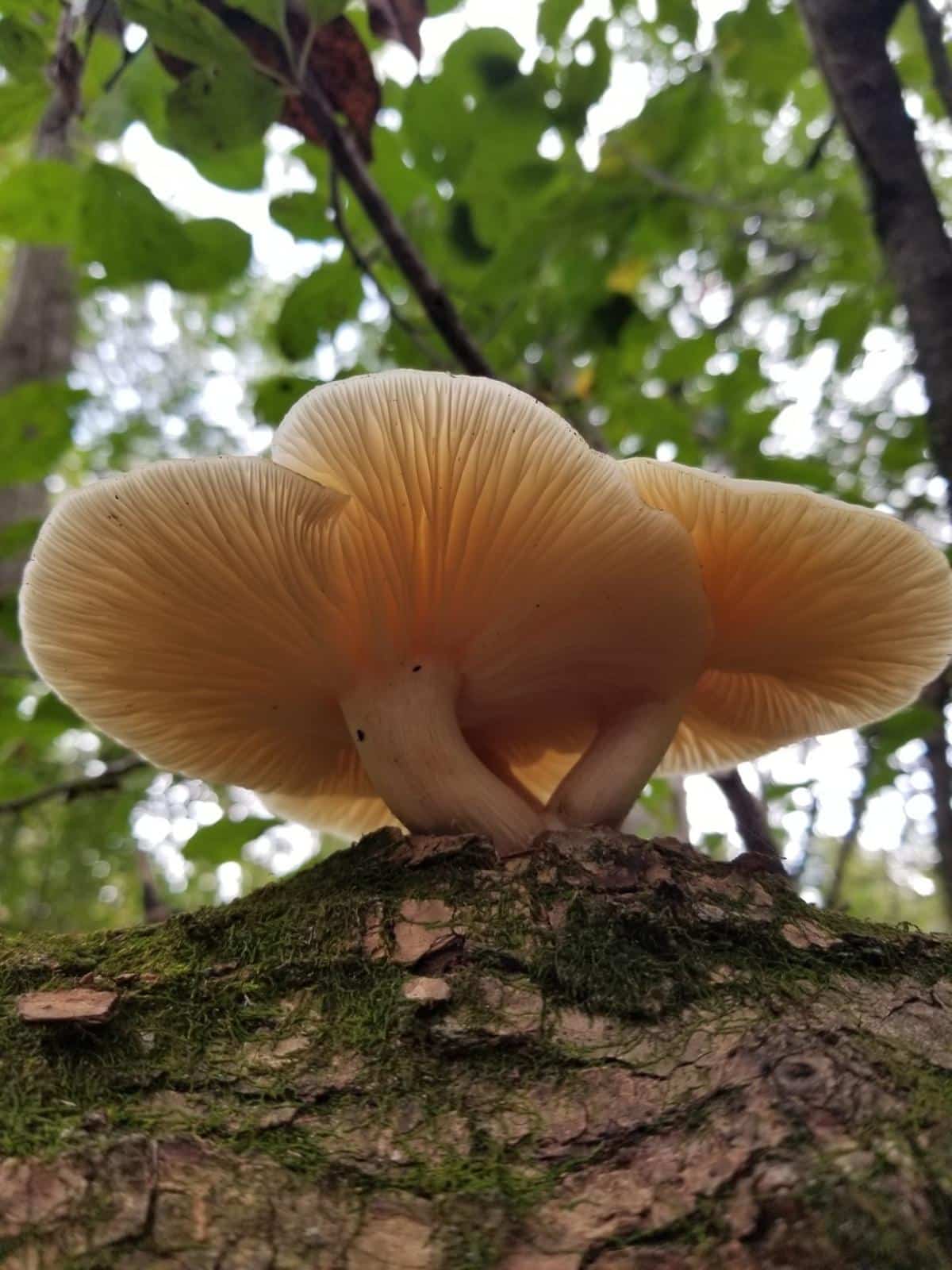
Elm Oyster Mushroom Identification
Season
Elm oyster mushrooms are a late summer or fall fruiting species. Sometimes, they persist into winter if it’s a mild season. Keep an eye open for them anytime from August through December. They don’t mind a little snow or frost – they hold up quite well and are still foragable when frozen.
Habitat
This oyster mushroom lookalike grows on elm trees. It usually grows singularly or in clustered groups of 1-3 mushrooms. The Elm oyster may also be found on box elder or beech. It always grows from the tree; it never grows from the ground.
Very often, the Elm oyster grows high up in a tree on scars or wounds in the tree. This mushroom is a parasite and saprotroph, so it will infect and feed on injured and dying trees. It can be challenging to forage only because it’s often impossible to reach.
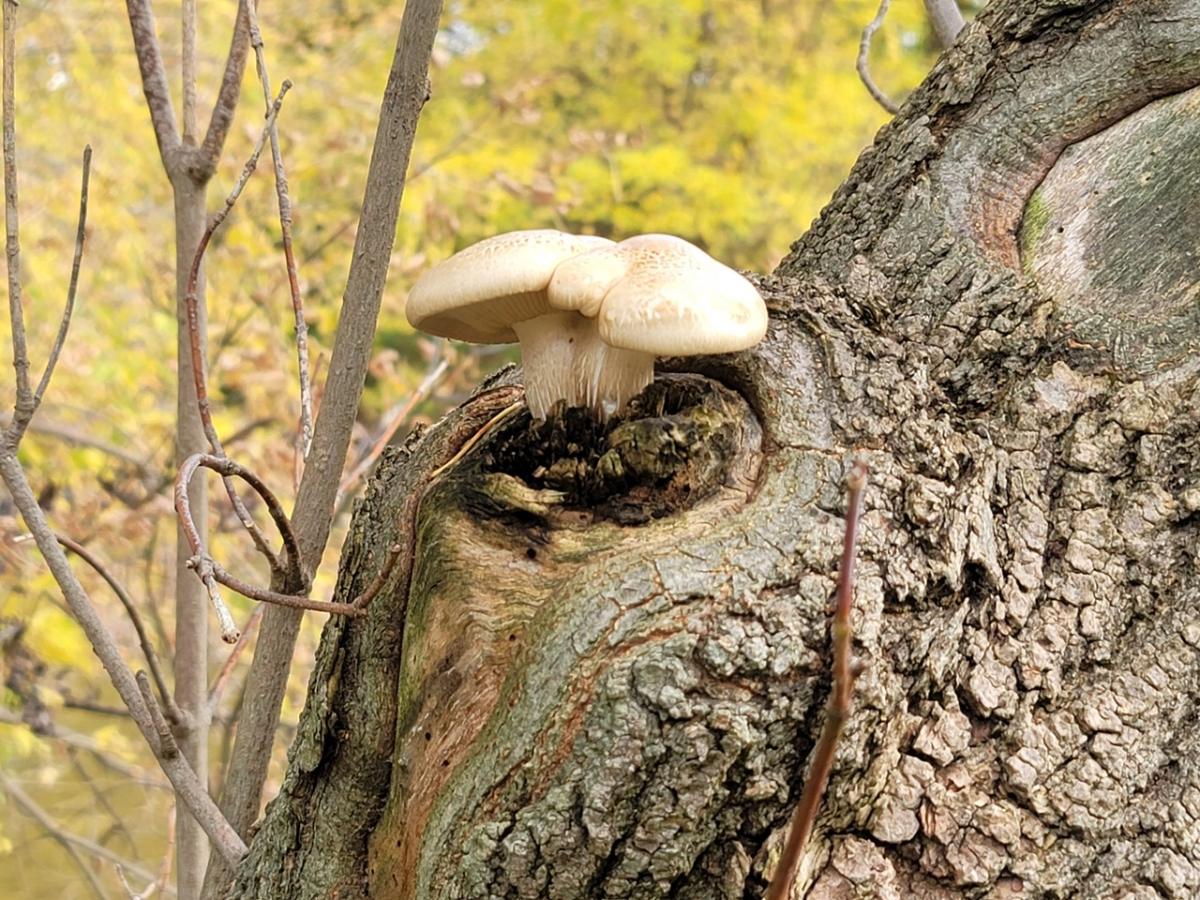
Elm Oyster by Mushbuh on Mushroom Observer
Identification
Elm oysters are very noticeable, extending out from an elm tree. They have large white or cream-colored caps and thick stems that stretch out perpendicular to the tree. Elm oysters look a bit like the tree is putting out a white umbrella.
The caps of elm oysters range from 2.5-6 inches in diameter. They are rounded and convex like an opened umbrella. As the caps mature, they sink in the center to flatten out or create a slight depression. The surface of the caps is smooth without decoration.
Elm oyster mushroom stems are white and bent or arched at the bottom. They’re 2-4 inches long, very thick, and solid. The stem connects to the center of the cap. Underneath the cap are white gills that may be very slightly decurrent (running down the stem) but not nearly as much as an actual oyster mushroom.
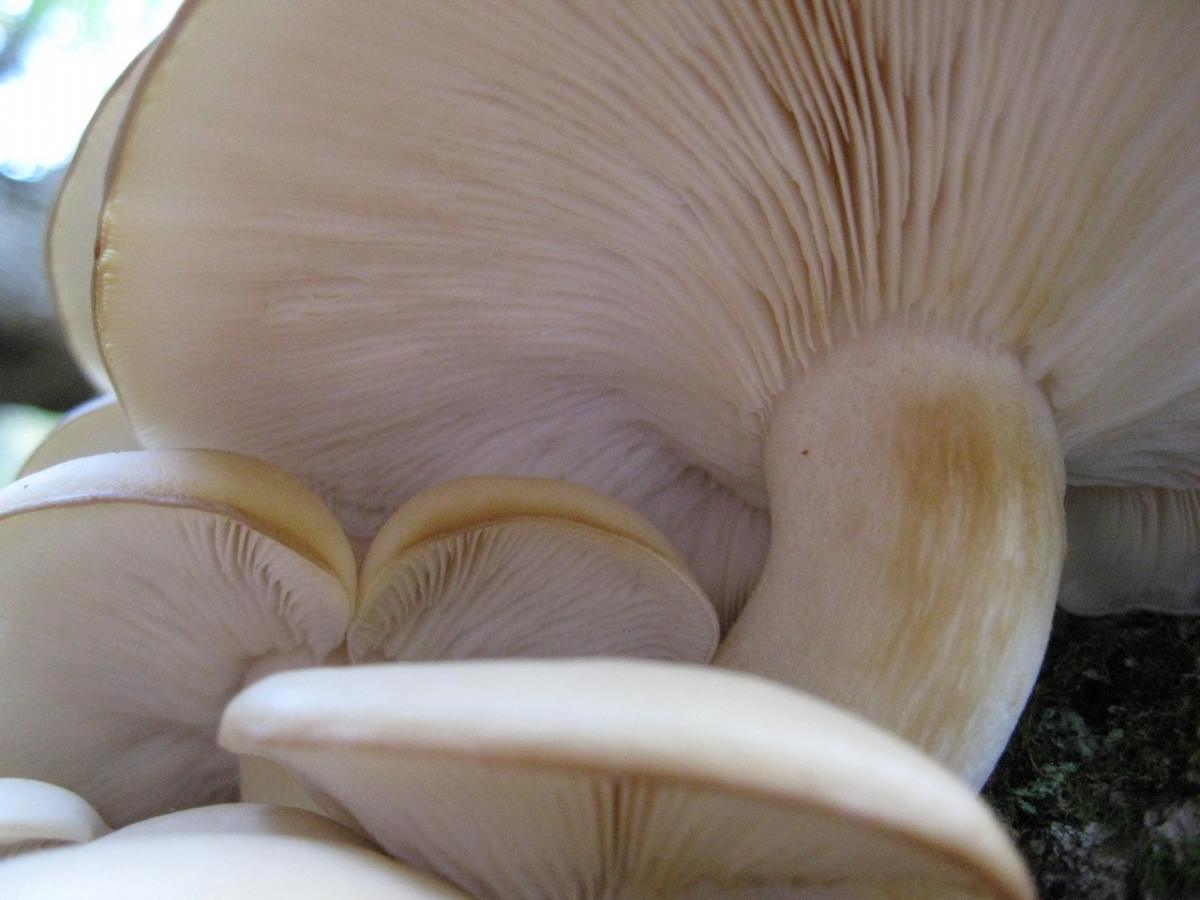
Elm Oyster by Vermonter on Mushroom Observer
** Every guide I’ve read says Elm oyster stems do not have decorations on them. These guides indicate the stems are white and smooth. However, I’ve seen some images from foragers with what is definitely an elm oyster, and the stem has brown scales. I can’t speak precisely to why this happens, how common it is, or if it is the same species, but I want to put it out there to the mushroom universe. I think the stem can feature brown, scaled decorations, and I don’t know if that makes it a separate species or just an abnormality of the known species.
The flesh of the elm oyster is white, and it does not change colors when cut or bruised. Elm oyster flesh is tough and very firm. In overall appearance, Elm oysters are big, sturdy, and prominent.
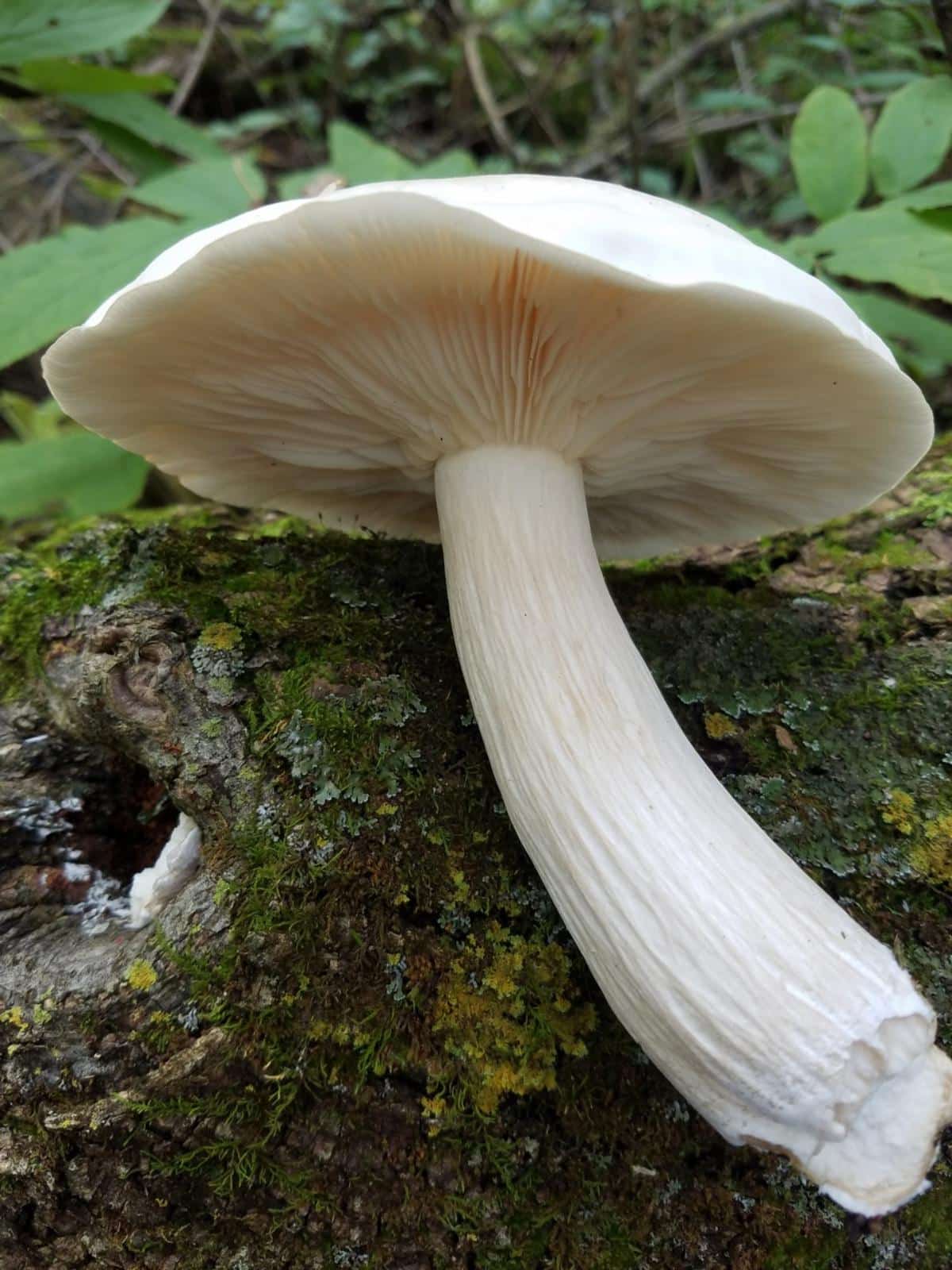
On The Lookout
Keep an eye out anytime you’re around elm trees, and don’t forget to look up. There is no real way to predict when they’ll appear, so you’ve got to just be observant while out in the woods.
Elm oysters are not a common mushroom, but they are widespread and occur across the country.
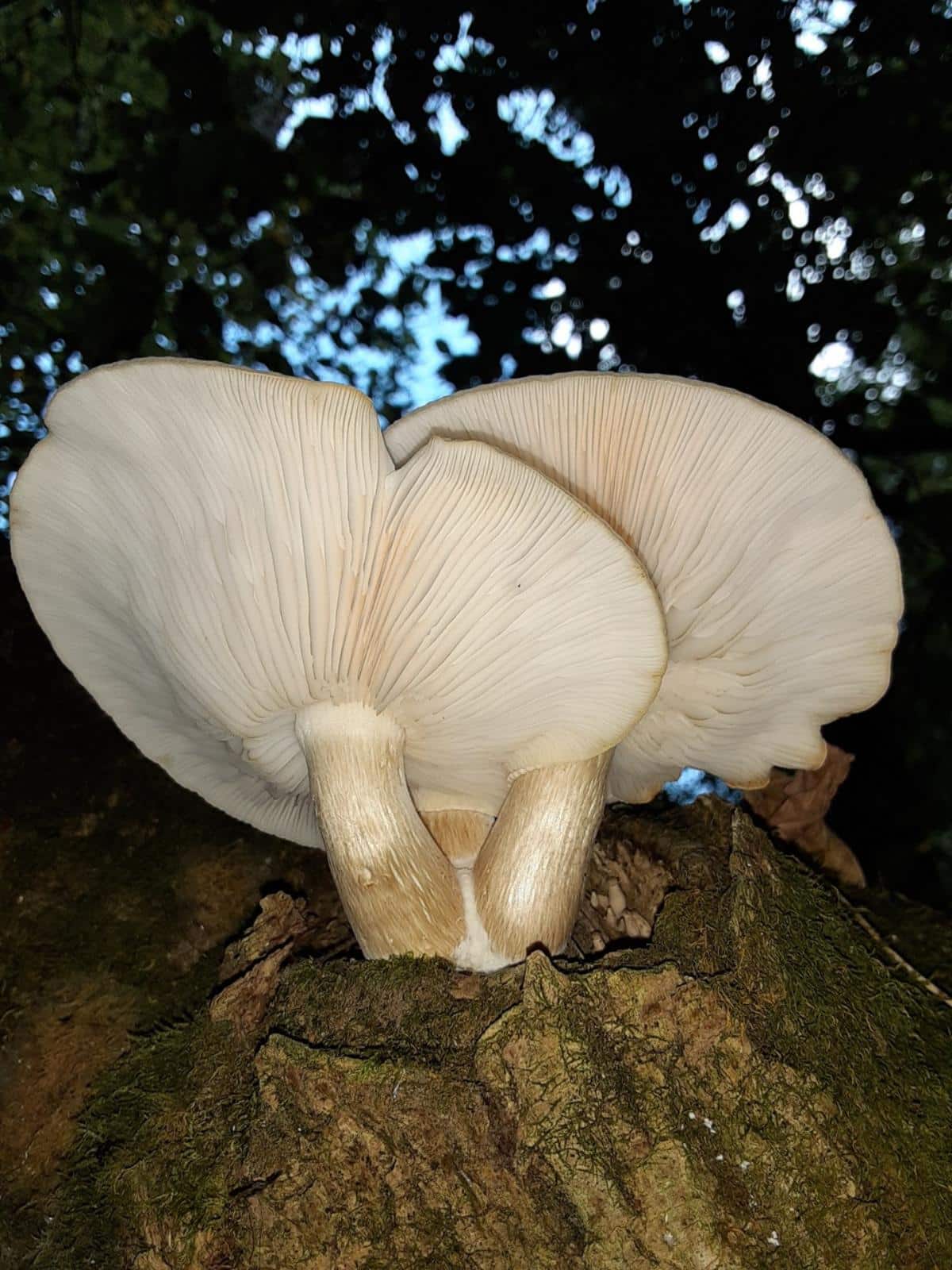
Foraging Elm Oyster Mushrooms
Cut the oyster off at the base of the stem. The stem is very tough and not really edible, so you can cut it off completely if you like.
Elm Oyster Mushroom Lookalikes
Beech mushroom
The biggest lookalike is the other widespread Hypsizygus mushroom, H. tessulatus. These two are practically identical. The key differences are preferred tree species and cap appearance. H. tessulatus usually grows on beech, aspen, and cottonwood trees, and it frequently has watery spot marking on the cap.
Volvariella Species
Species in this genus look extremely similar to Elm oysters in appearance and how they grow from the side of trees. However, there is one key difference. They have a cup-shaped white volva at the base of the stem. Always look for this feature before foraging any mushroom you think is an Elm oyster to verify the identity.
Oyster Mushrooms
True oyster mushrooms are often confused with the Elm oyster. Go here to learn more about the true oyster, Pleurotus species.
Cooking With Elm Oyster Mushrooms
Elm oyster mushrooms can be used in any recipe that calls for oyster mushrooms or button mushrooms. Usually, just the cap is the edible part. The stem is usually too tough.
- Oyster mushroom tacos
- Stir fry
- Sautéed with butter and garlic
- Mushroom risotto
- Fried elm oysters
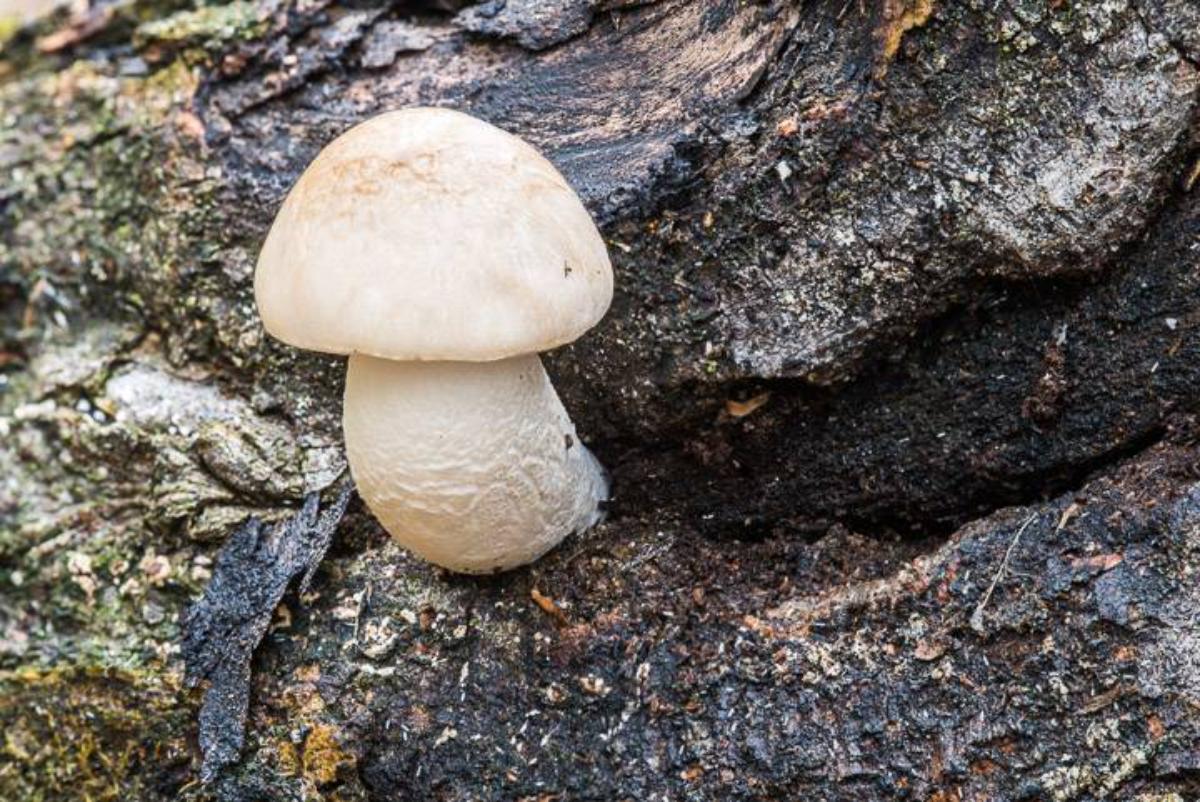
Elm Oysters by Gary Shackelford on Mushroom Observer
Uses For Elm Oyster Mushrooms
In addition to culinary uses, elm oyster mushrooms are also being studied for other purposes:
- Medicinal compounds that are believed to be antioxidant, anti-inflammatory, and potentially treat diabetes-related issues. In China, the Elm oyster is considered medicinal.
- Removing toxins from the environment through mycoremediation techniques. Elm oysters contain an enzyme that assists in decomposing trees. This enzyme might also be useful in biodegrading other materials, like plastic.
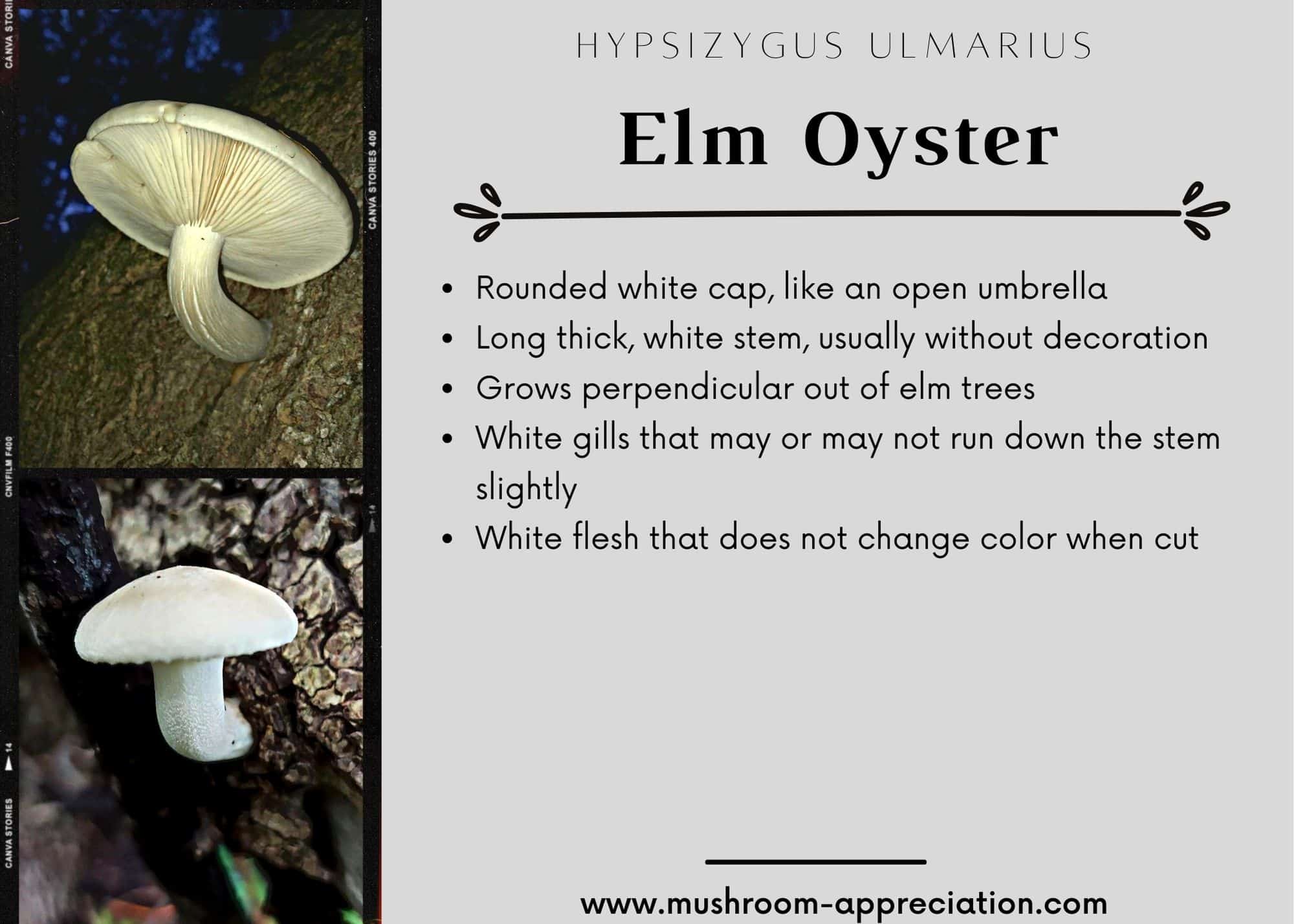
Elm Oyster Mushroom Common Questions
What is the elm oyster mushroom?
This a delicious edible mushroom that can be used like other Oyster mushrooms. It is often incorrectly sold as ‘Oyster mushroom’ but it produces larger fruit bodies than other Oysters and does look different, too.
What do elm oyster mushrooms taste like?
Some people report a seafood-like taste while others just say woodsy — it probably varies a bit depending on the environment it is growing.







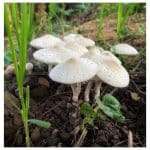
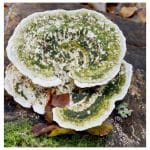
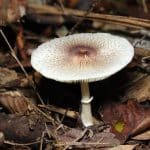
David Rivera says
Thank you Jenny
Very thorough and informative. Thank you for helping differentiate elm from true oyster mushrooms. I was unaware of the differences and now I believe that one of the markets that I purchase mushrooms from may be selling me elm mushrooms at times…
Jenny says
Glad it was helpful! It’s definitely possible. Some places lump all oysters together, counting them all as the “same” because they’re similar enough and all edible. But, it’s always good to know what you’re getting!
Corey Rusch says
I think I found one but am not sure, would like to send a picture of it but don’t know how..I am a novice at this and people are telling me different things, and I don’t know what to believe
Jenny says
You can submit pictures to our facebook group. Make sure to read the featured post so you include all the necessary information and images.
Lidya Pacheco-Carpenter says
Hello,
I’m starting to really appreciate mushrooms.
Thanks for the knowledge.
Lidya
Susan says
Caution: After a meal with elm oyster mushroom found growing on Acer ngunda, I was ill for 3 to 4 days with cramps.
Jenny says
Thank you for sharing that. I have not heard that before but it is a good caution to everyone that any mushroom can cause issues